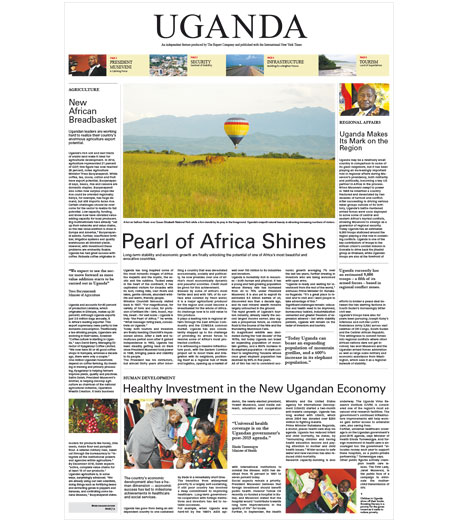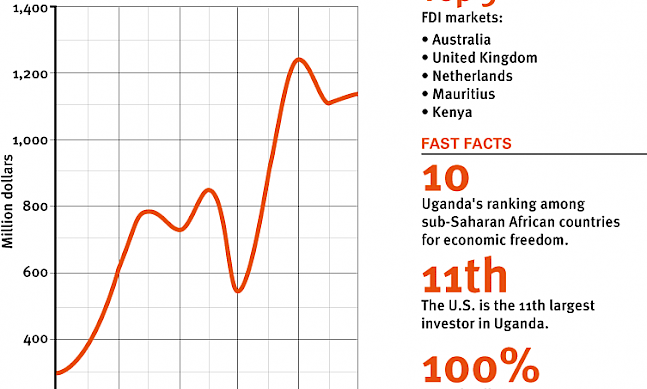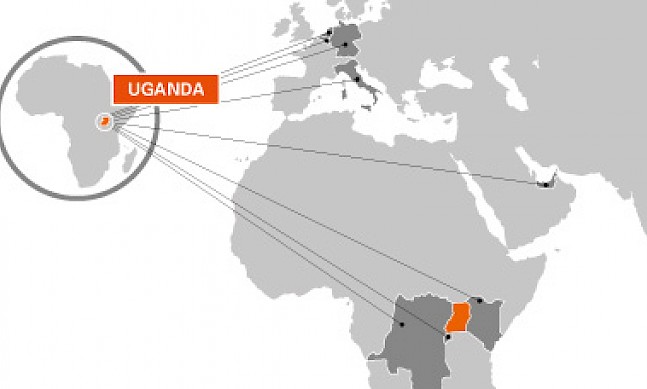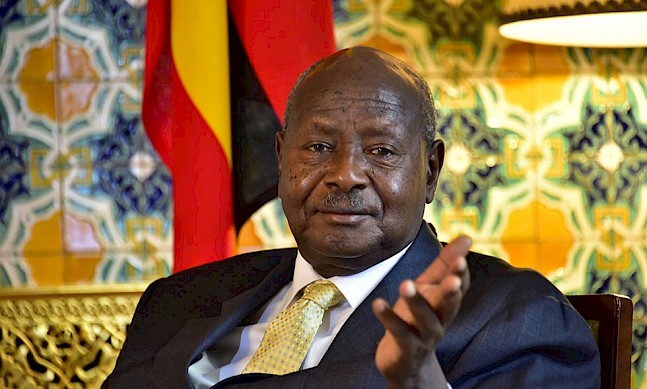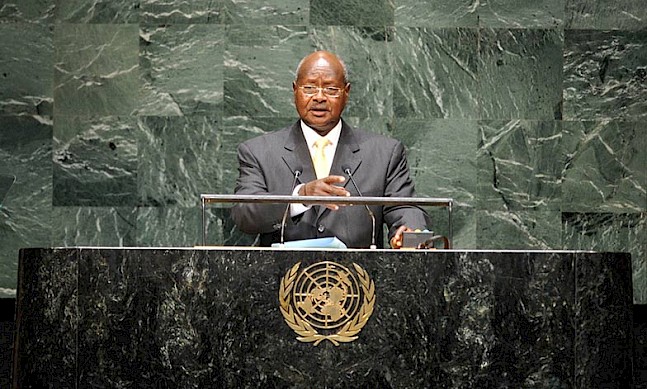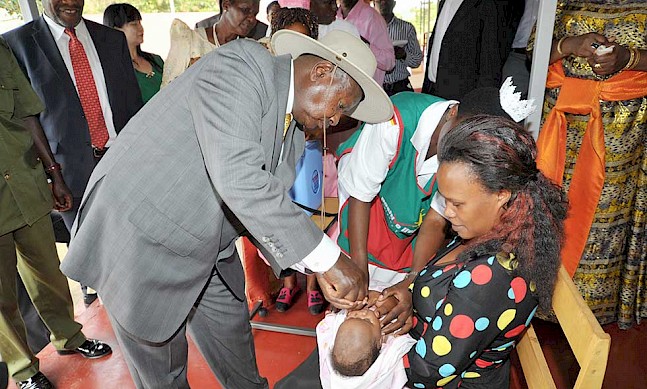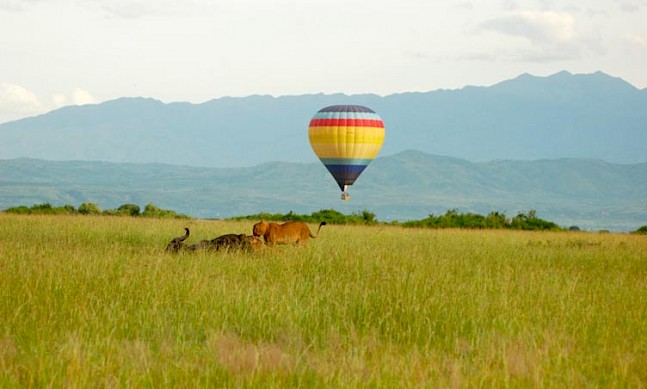Political stability, international partnerships and an enviable trade-route position augur economic growth.
Being a landlocked country limited by industrial and infrastructural challenges, Uganda knows it must find creative, comprehensive economic solutions. Its trade strategy is thus based on regional trade initiatives and a better regulatory framework, one that envisions public-private partnerships and support for local producers. Uganda’s improved ties with the United States will also benefit international exports.
Uganda belongs to the East African Community (EAC) customs union and the Common Market for Eastern and Southern Africa (COMESA). The former is a tariff-free trade zone encompassing Uganda, Kenya, Tanzania, Burundi and Rwanda. The latter’s Free Trade Area gives Ugandan business better access to a 19-nation market, representing almost 60 percent of Uganda’s total export market. The Free Trade Area eliminates tax barriers deleterious to Ugandan export competitiveness.
These regional initiatives have also their challenges. While Kampala was honored to host the first East African manufacturing business summit in September, protectionist fears linger. A ‘sugar conflict’ fueled by Kenyan opposition politicians caused Kenyan farmers to protest a bilateral agreement allowing more imports of Ugandan sugar.
More challenging for Uganda, however, has been the instability of its top trading partner, South Sudan, which in 2013 accounted for $360 million of Ugandan exports. Uganda in 2014 increased trade with the Democratic Republic of the Congo, and this growing African economy should remain a permanent complement to the expected renewed trade with a more stable future South Sudan.
“The UDC demonstrates that the government of Uganda intends to catalyze industrial development in this country.”
Fred Ogene CEO of Uganda Development Corporation (UDC)
Tweet ThisUganda’s new legislative framework regulates trade, emphasizes public-private partnerships, and targets once-neglected industries. According to Minister of Trade Amelia Anne Kyambadde, this encourages producers “to improve on their quality to make their products competitive.” The National Bureau of Standards also “can impose punitive measures” on manufacturers failing to comply. Higher standards mean better products and a better country brand.
Leaders seek to add value to Uganda’s export products. For example, Uganda offers high-quality leather, but it is generally sold abroad for processing — costing Uganda both profit and prestige. According to the Aga Khan Foundation, leather exports’ profits could be doubled, simply through domestic processing.
“You have to have a good brand,” says Elly Twineyo Kamugisha, Executive director of Uganda Export Promotion Board. “This is all about perception.” Kamugisha believes Uganda must identify its most viable exports, increase non-traditional exports, and reduce the percentage of primary products exported.
Uganda’s new strategic relationships may help trade. The United States considers Uganda a valued security partner. This has knock-on effects for domestic political stability, good governance and reforms — and increases investor confidence.
Ugandan exporters may benefit more from other trade deals, like the African Growth and Opportunity Act (AGOA). Although signed with much fanfare in 2000 by then-President Bill Clinton, the deal had few results. However, leaders have new hopes for AGOA. “Our challenge has been access,” says Trade Minister Kyabadde. “We are already working closely with the American Chamber of Commerce to access our consumers in America,” she adds.
Main photo: Uganda is a member of the COMESA trade bloc, of the EAC, and a signatory to the Africa Free Trade Zone. Source: CIA World Factbook.
Map: d-maps.com
“While Kampala recently was honored to host the first East African manufacturing business summit, protectionist fears linger.”Tweet This
Rural development - island transformation
In 2005, Kalangala was Uganda’s second-poorest district. Today, this Lake Victoria archipelago is Uganda’s fifth-richest.
The Kalangala project affirms that investment can spur local community development. Islanders who previously lacked electricity and drinking water today enjoy these essentials. Schools and hospitals are also coming.
Foreign investment made Kalangala’s infrastructure development possible. When Oil Palm Plantation Investor obtained a concession to develop a $50 million oil plantation, the government agreed to upgrade infrastructure. It partnered with Infraco, an experienced and capable British infrastructure developer.
Today, Infraco subsidiary Kalangala Infrastructure Services (KIS) is overseeing projects. Managing Director John Opiro is enthusiastic about developments; by 2025, he sees “horticulture, agro-processing and fish processing springing up,” along with tourism.
The Uganda Development Corporation (UDC), a private venture that bridges public policy and private-sector execution, has been KIS’ steady partner. “UDC provides the compromise and the solution that the private sector needs,” Opiro attests.



